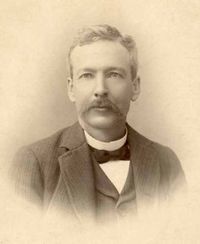Luther Burbank and the First Shasta Daisy, the "Mount Shasta" Daisy

2001 marked the 100th anniversary of Luther Burbank’s introduction of the Shasta Daisy. Burbank developed this quadruple hybrid which he named after Mt. Shasta. It took Burbank 17 years to do this.
Burbank's vision of the new daisy was : 1) very large pure-white flowers; 2) a long blooming period; 3) would do well both as a cut flower and garden plant.
The pathway to the first Shasta Daisy:
1st Cross: Oxeye daisy (Leucanthemum vulgare) naturalized in New England X English field daisy (Leucanthemum maximum) from England which had larger flowers than the oxeye daisy = an immediate improvement in flower size;
2nd Cross : X Portuguese field daisy (Leucanthemum lacustre) = further improvements in flower and plant characteristics;
3rd Cross: (After 6 years of selective growing the products of the above) X Japanese field daisy (Nipponanthemum nipponicum), a species with small, pure-white flowers
= the first "Mount Shasta Daisy" (aka. Shasta Daisy)
Burbank's vision of the new daisy was : 1) very large pure-white flowers; 2) a long blooming period; 3) would do well both as a cut flower and garden plant.
The pathway to the first Shasta Daisy:
1st Cross: Oxeye daisy (Leucanthemum vulgare) naturalized in New England X English field daisy (Leucanthemum maximum) from England which had larger flowers than the oxeye daisy = an immediate improvement in flower size;
2nd Cross : X Portuguese field daisy (Leucanthemum lacustre) = further improvements in flower and plant characteristics;
3rd Cross: (After 6 years of selective growing the products of the above) X Japanese field daisy (Nipponanthemum nipponicum), a species with small, pure-white flowers
= the first "Mount Shasta Daisy" (aka. Shasta Daisy)